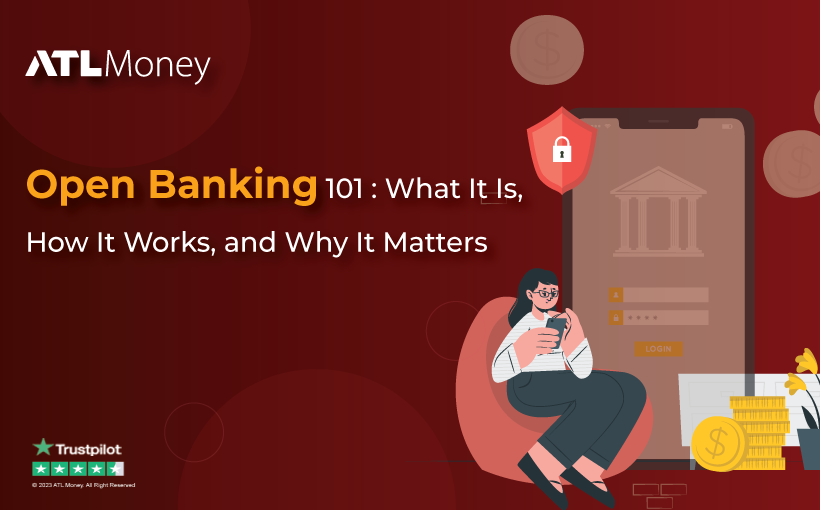As the world becomes ever more interconnected, discussing digital financial innovations is becoming more important. Open banking is one such innovation that is rapidly transforming the banking and financial services industry.
Banks have traditionally operated independently, working to keep customers within their ecosystem. Still, open banking is now giving customers the power to select the best products and services from across different banks and financial service providers.
In this article, we will take a closer look at open banking, what it is, if it is safe, and why it matters.
What Is Open Banking?
Open banking is the sharing of financial information electronically, securely, and with the customer’s consent. It is a concept that has gained traction in recent years, particularly as an increasing number of customers look for more digital solutions to their financial needs. Essentially, it allows third-party developers access to banks’ financial data to create new financial products and services.
Open banking APIs are what make this possible. APIs connect financial service providers, allowing them to view customer account data without needing to navigate bank security measures, thus enabling a more transparent and accessible interaction. This can include information on bank balances, transaction history, spending patterns, direct debit payments, and credit card transactions.
Is Open Banking Safe?
Like any digital platform that involves the transmission of personal data, safety, and security are of utmost importance. A range of protocols and regulations have been put in place to ensure that safety is prioritized, including the vetting of third-party providers, the use of encryption to protect data, and permission requirements.
Regulator authorities like the General Data Protection Regulation (GDPR) in Europe and the Open Banking Implementation Entity (OBIE) in the UK have established standards that banks must adhere to. Consent and identity verification are at the foundation of these regulations to ensure that customer information is kept private and away from cybercriminals’ prying eyes.
Why Is Open Banking Important?
Open banking represents a significant shift in the financial industry’s processes, giving customers more control of their financial data and the products they use. It promotes competition among banks and financial institutions, driving innovation and better services for customers. When a customer’s account data is opened to other banks and service providers, it means that they can switch providers more easily and find better deals, services, and products.
Here are some examples of how open banking is changing the industry and benefiting customers:
– Account Aggregation: Open banking makes account management easier as it brings together all of a customer’s financial accounts in one place. Customers can get a comprehensive view of their finances and understand their spending patterns.
– Personalized Offers: Third-party banks can use a customer’s transaction information to develop new financial products based on spending patterns. For instance, if a customer is spending more on traveling, they may begin to receive advertising for better travel insurance or travel reward credit card products.
– Payment Choices: Open banking can also introduce speedier and more secure payment options, such as bank-to-bank transfers or the sharing of payment data between merchants.
Conclusion
In conclusion, open banking is a groundbreaking concept that has the potential to revolutionize the banking and financial services industry. With its increased competition and innovative service offerings for customers, open banking represents a significant opportunity for fintech, traditional banks, and customers. It allows customers to have more control over their finances and enjoy a convenient, personalized experience.
Of course, it is also vital to ensure that security measures are in place to protect customer data at all times, which is a top priority of the implementing authorities. As we move forward, we can expect open banking to become even more widespread, driving competition, innovation, and improved customer experiences in the financial world.
Open banking refers to the practice of allowing third-party developers access to banks’ financial information to create new financial products and services. It’s a system where banks open up their own systems and data to trusted third-party service providers, allowing them to innovate on behalf of customers in a secure and transparent way.
Open banking is made possible by the use of open APIs (application programming interfaces) that enable third-party developers to extract consumer data from banks when proper customer permission is given. This can include information on bank balances, transaction history, direct debit payments, and credit card transactions.
The safety of open banking depends on various factors, such as how banks manage and safeguard customer data throughout the entire process of transmitting the data between the different entities involved. To ensure safety in the open banking system, governing bodies and financial institutes have implemented standards to protect consumer financial data.
For example, the EU’s General Data Protection Regulation (GDPR) ensures that all organizations handling EU citizens’ personal data must operate securely and transparently when handling customer data. Additionally, the Payment Services Directive 2 (PSD2) in Europe requires that all transactions involving open banking require two-factor authentication to ensure maximum security.
Furthermore, the use of Application Programming Interfaces (APIs) allows consumers to manage their data sharing better, which can provide added security. It puts the power to control their data in the hands of the consumers, meaning that they have the ability to control which companies can access what information and for how long.
Overall, open banking has the potential to revolutionize the banking and financial services industry, allowing for a more convenient and customized banking experience. However, as with any technology-driven system, it’s essential to ensure that proper security measures are in place, and consumer data is safeguarded at all times. With the right regulations and standards in place, open banking can provide a safe, secure, and transparent financial environment.
